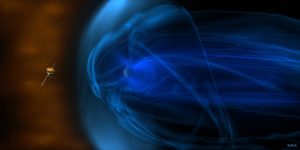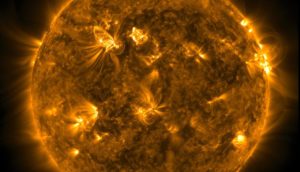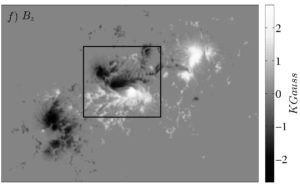Research Lines:
Turbulence in plasmas
 Turbulence is an ubiquitous phenomenon that can be observed on a huge range of scales, from galaxy clusters down to micro- and nano-fluidics. It is observed mostly in neutral flows, but also in charged, magnetized flows such as astrophysical plasmas. The study of turbulence requires a multiple approach: theoretical, experimental, based on data analysis and on numerical simulations. All these aspects are exploited here, with particular focus on space and laboratory turbulent plasmas.
Turbulence is an ubiquitous phenomenon that can be observed on a huge range of scales, from galaxy clusters down to micro- and nano-fluidics. It is observed mostly in neutral flows, but also in charged, magnetized flows such as astrophysical plasmas. The study of turbulence requires a multiple approach: theoretical, experimental, based on data analysis and on numerical simulations. All these aspects are exploited here, with particular focus on space and laboratory turbulent plasmas.
Most of the visible matter in the universe is in the state of plasma. Often times, astrophysical plasmas have highly turbulent dynamics, resulting in a large number of interesting processes such as: energy dissipation, particle acceleration, excitation of electromagnetic waves, particle heating, magnetic reconnection, formation of shocks. All these phenomena can be studied in-situ only in space plasma, where instruments on-board scientific space missions can take measurements. Data can be studied using specific diagnostic tools, which allow the validation of theories and models. A substantial use of numerical simulations is also necessary. The study of turbulence in the interplanetary space is therefore of broad interest for the understanding of the dynamics of astrophysical plasmas, but also for its implications on laboratory plasmas and for the Sun-Earth interaction.
The study of space plasmas turbulence is based on three main approaches: the analysis of data provided by the scientific mission; the development of theoretical models and novel data analysis techniques; the use of numerical simulations (massive computational resources are often required; these are provided by large facilities for high performance computing, such as CINECA or the UNICAL HPCC. Examples are the full characterization of intermittency in solar wind turbulence, and the validation of the theoretical prediction for the scaling law of the energy flux in solar wind turbulence.
Solar flares and the Sun-Earth connection
 In recent years, the study of solar variability and its influence on Earth has increased, both because of a more compelling need for a good protection against solar storms that arise from the massive use of the modern technology, and for the exponential quantitative and qualitative increase of measurements available. Our approach is based on the exploitation of in-situ and remote measurements of the Sun-Earth system, including remote solar imaging, magnetic field, and energetic particles, and solar wind and magnetospheric in situ and remote measurements.
In recent years, the study of solar variability and its influence on Earth has increased, both because of a more compelling need for a good protection against solar storms that arise from the massive use of the modern technology, and for the exponential quantitative and qualitative increase of measurements available. Our approach is based on the exploitation of in-situ and remote measurements of the Sun-Earth system, including remote solar imaging, magnetic field, and energetic particles, and solar wind and magnetospheric in situ and remote measurements. The main research topics concern the dynamics of the solar active regions and their relationship with flaring activity through the analysis of the complexity of the magnetic field configuration in flaring active regions. Other studies concern the interpretation in terms of coupling models is also studied from data, for example through the analysis of proper modes.
The main research topics concern the dynamics of the solar active regions and their relationship with flaring activity through the analysis of the complexity of the magnetic field configuration in flaring active regions. Other studies concern the interpretation in terms of coupling models is also studied from data, for example through the analysis of proper modes.
Contact person: Luca Sorriso-Valvo
